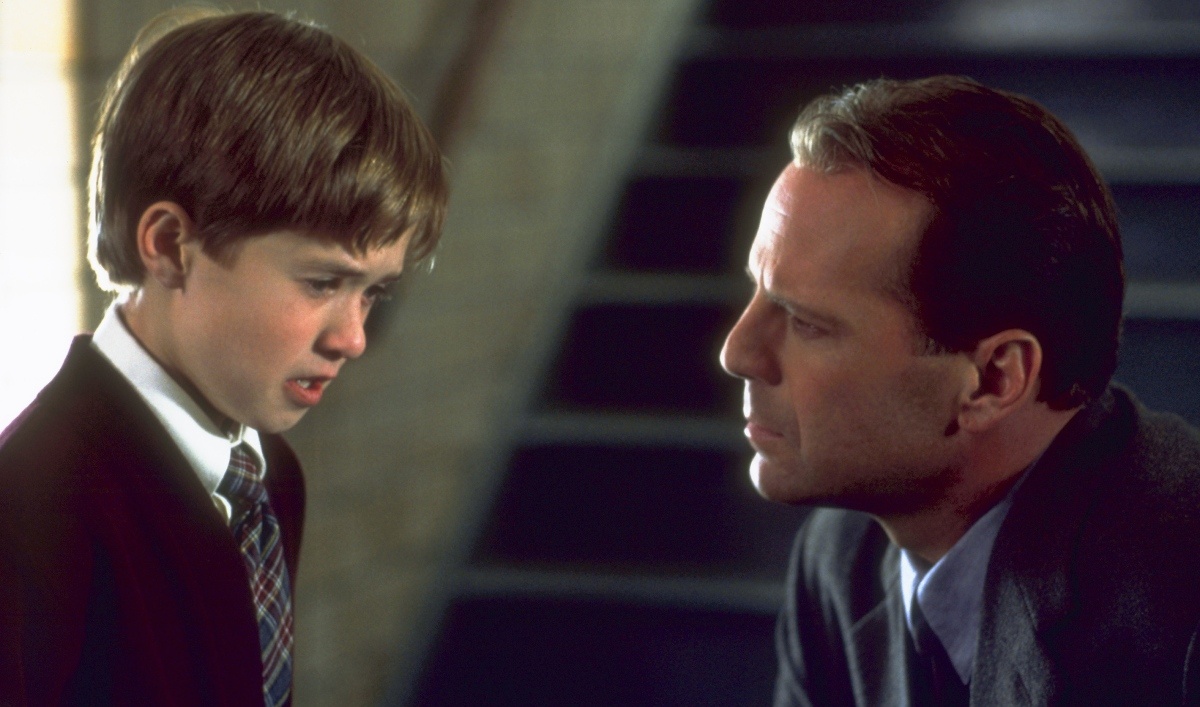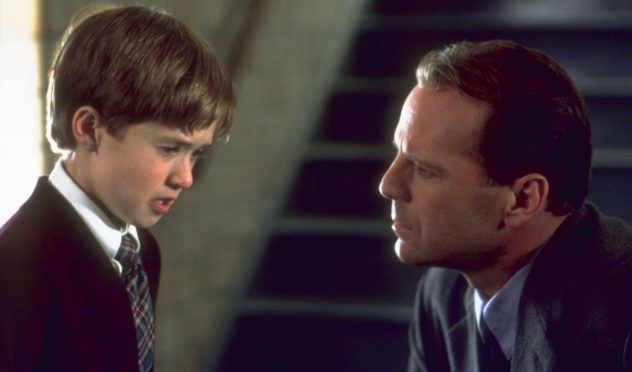Foreshadowing is an indispensable tool in movie writing. It can help writers create tension, hint at future plot twists, and even provide clues to a character’s true nature. But what exactly is foreshadowing? How can writers use it effectively to engage viewers? And what impact does it have on audience reactions? To answer these questions, it is important to understand the definition of foreshadowing and the various types of foreshadowing used in movies.
Definition of Foreshadowing
Join the PERA (Personal Entertainment Research Assistant) waitlist.
The World's Most Indispensable Movie App
The RunPee app tells you the best times to
run & pee during a movie
so you don't miss the best scenes.
Download the RunPee app.
100% free (donation supported)
Foreshadowing is an essential technique in movie writing, as it helps writers build tension, hint at upcoming plot twists, and provide clues to a character’s nature and motivations. Foreshadowing is typically defined as a hint or suggestion of what is to come, and it can be used in subtle or obvious ways. Subtle foreshadowing involves the introduction of small clues that point to future events or character details. Obvious foreshadowing, on the other hand, is often used for comedic effect and is meant to be blatantly obvious to the viewer. Chekhov’s gun is another type of foreshadowing, which involves introducing an object early in the story that is later used to resolve the plot. Finally, there is red herring foreshadowing, which involves false clues meant to mislead the viewer. Foreshadowing is an invaluable tool for writers, as it can help build suspense and create anticipation in the viewer. At Essaypro, users can find useful information on how to use foreshadowing effectively in their writing, as well as the impact it can have on audience reactions.
Analyzing the Benefits of Foreshadowing
What people are saying
about the RunPee app.
May 15, 2020
Got this back when I was pregnant, but I'll be keeping it forever, it's just so handy. I don't go to the movie theater that often (even back before quarantine when you actually could...) but I make sure the app and the movie list are all current and updated, cause it's so handy! It's great for running late cause you can read their summary, obviously awesome for bathroom or snack breaks mid movie, and I also love that it tells you if there's anything after the credits which is very handy.
View all reviews
Apple App Store | Google Play Store
Download RunPee app
When used correctly, foreshadowing can offer numerous benefits. One of the primary benefits of foreshadowing is that it can help enhance suspense. By providing hints of what is to come, foreshadowing allows viewers to anticipate future events and keeps them engaged in the story. Foreshadowing can also be used to develop characters, letting viewers know more about a character’s backstory or motivations. And foreshadowing can even help build credibility, making a story more believable and immersive.
Exploring Different Types of Foreshadowing
Foreshadowing can be used in many different ways. One type of foreshadowing is subtle foreshadowing, which involves hints or clues placed subtly throughout the story that point to a future event or reveal a character’s true nature. Another type of foreshadowing is obvious foreshadowing, which is usually used for comic effect. This type of foreshadowing doesn’t attempt to hide a future event, but rather makes it blatantly obvious to the viewer.
A third type of foreshadowing is Chekhov’s gun, a term coined by Russian playwright Anton Chekhov. This type of foreshadowing involves introducing an object early in the story that is later used to resolve the plot. For example, a character may pick up a gun in a seemingly innocuous scene, which is then used in a dramatic showdown at the end of the movie. Finally, there is red herring foreshadowing, which refers to false clues that are meant to mislead the viewer, creating a sense of uncertainty and surprise.
Understanding Foreshadowing’s Effect on Audiences
When used correctly, foreshadowing can have a significant effect on viewer expectations and reactions. Viewers expect to be surprised and delighted by a story, and foreshadowing can help provide that sense of anticipation. Foreshadowing can also help create a more immersive experience for viewers, as they become part of the story’s development. And when used appropriately, foreshadowing can lead to positive reviews and increased audience engagement.
Developing Foreshadowing Techniques
To effectively use foreshadowing in movies, writers at the Film Academy need to understand the conventions of a particular genre. For example, horror movies often rely heavily on foreshadowing to create tension and suspense. Writers should also establish the conflict early on, as this allows them to create an effective series of hints and clues leading up to the climax. When introducing characters, writers should give viewers just enough information to anticipate what a character’s role may be. Additionally, writers should create a consistent tone throughout the story to maintain the audience’s attention.
At the film academy, it is important to use foreshadowing in a way that is both subtle and effective. Writers can utilize various techniques to create suspense and engage viewers. For example, they can use verbal hints, such as characters referring to an event that happens later in the story. They can also use physical objects, such as a weapon that hints at a future event or a book that suggests a character’s backstory. Writers can also make use of Chekhov’s gun, a term coined by Russian playwright Anton Chekhov, which involves introducing an object early in the story that is later used to resolve the plot. Finally, writers can use red herring foreshadowing, which refers to false clues that are meant to mislead the viewer, creating a sense of uncertainty and surprise.
When used correctly, foreshadowing can have a significant effect on viewer expectations and reactions. Viewers expect to be surprised and delighted by a story, and foreshadowing can help provide that sense of anticipation. Foreshadowing can also help create a more immersive experience for viewers, as they become part of the story’s development. And when used appropriately, foreshadowing can lead to positive reviews and increased audience engagement. At the Film Academy, writers should take the time to develop their foreshadowing techniques. With the right knowledge and skill, they can create a story that engages and surprises viewers.
Conclusion
In conclusion, this paper has explored the definition, benefits, and types of foreshadowing, as well as its effect on audiences and how to develop foreshadowing techniques. When used properly, foreshadowing can create suspense, develop characters, and help establish credibility, leading to a more engaging story. By providing educational content on the different types of foreshadowing and how to use it effectively, writers can create a suspenseful and immersive experience for viewers, while also increasing audience engagement and reviews. Foreshadowing is an invaluable tool for writers creating movie plots, and when used correctly it can help elevate the story in meaningful ways.






